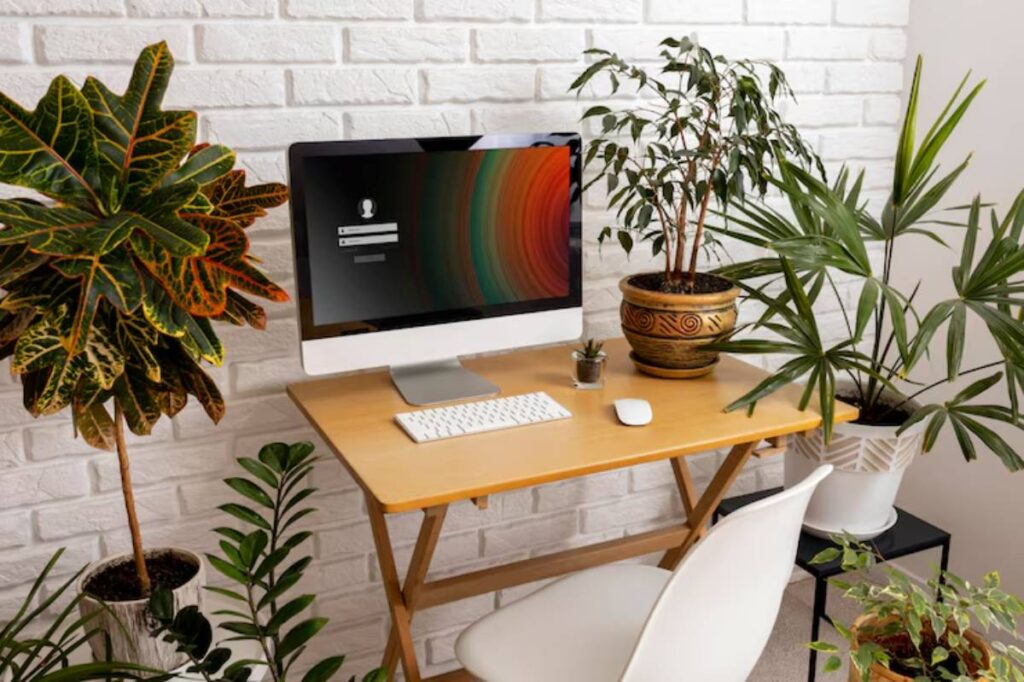The Personal Development Blog

Building a Long-Term Digital Minimalism Plan
There’s something satisfying about a digital detox. You clear the noise, reclaim your time, and breathe a little easier. But what happens after the detox ends? Do you go back to old habits, or build something new?
For many, the challenge isn’t cutting back on screen time for a week. It’s maintaining that clarity over months and years. That’s where a long-term digital minimalism plan comes in.
Digital minimalism isn’t just a reset. It’s a lifestyle shift — one that requires intention, reflection, and a blueprint that evolves with you. In this guide, you’ll learn how to create a tech-free lifestyle blueprint, design systems that last, and stay aligned with your values as the digital world keeps changing.
Why Long-Term Planning Is Essential
Detox Alone Isn’t Enough

Short-term digital cleanses have benefits: better sleep, sharper focus, and more presence. But without a post-detox plan, many people slide back into default settings. The tech clutter returns. The endless scroll resumes. The clarity fades.
A long-term approach is about sustainable digital wellness. It’s not anti-tech. It’s about using tech in ways that support your values, energy, and relationships.
Tech Will Keep Evolving — So Should You
The apps, platforms, and norms around technology change constantly. Your digital life can’t be a one-time clean-up. It needs ongoing care.
Long-term minimalism helps you:
- Adapt to new digital demands without overwhelm
- Protect your attention in a hyper-connected world
- Stay intentional as work, home, and tech boundaries blur
1: Define Your Digital Values
What Does Digital Wellness Mean to You?
Start by clarifying your tech intentions:
- What kind of life are you trying to build?
- How do you want technology to support that life?
- What digital habits bring you energy? What drains you?
When your digital life aligns with your core values, decisions become easier. You can say no to unnecessary apps, tools, or requests without guilt.
Your Digital North Star
Create a guiding statement or question to anchor your choices.
Examples:
- “Does this app serve a real purpose or just fill time?”
- “Will this habit support my creativity or distract from it?”
- “I want tech that enables real-world connection, not replaces it.”
This gives you a compass when deciding what to use, delete, or adjust.
2: Design Your Digital Architecture
Core Systems for a Minimalist Digital Life
Just like a well-designed home has purposeful spaces, your digital life should too.
Think in terms of:
- Communication: Email, messaging, meetings
- Information: News, reading, podcasts, video
- Organisation: Calendar, task managers, cloud files
- Creation: Writing, design, collaboration
- Connection: Social apps, groups, shared hobbies
For each system, ask:
- What do I actually use?
- What can I simplify?
- What can I combine?
Minimalism isn’t about using the fewest tools possible. It’s about using the right tools — ones that feel clean, intuitive, and necessary.
Set Boundaries by Design
Design boundaries into your systems:
- Use inbox filters and scheduled email checks
- Mute notifications by default
- Batch tasks and content consumption
- Reserve mornings or evenings for offline time
These aren’t just habits — they’re systems that protect your clarity.
If you’re still refining your tool use, learning to avoid app overload at work can be a powerful next step in your planning.
3: Review and Reset Regularly
Monthly Digital Reviews
Each month, check in with your digital patterns:
- What felt nourishing? What felt noisy?
- Are you spending time on what matters?
- Have new habits crept in?
Use this as a chance to:
- Archive old files
- Unsubscribe from cluttered inboxes
- Delete apps you haven’t opened
- Review your screen time reports
Treat it like digital spring cleaning, done consistently.
Quarterly Mini-Detoxes
Every few months, take a weekend or week to reset:
- Go screen-free in the evenings
- Take a break from social media
- Silence non-urgent alerts
These short resets strengthen your digital boundaries and remind you how peace feels.
4: Build a Tech-Free Lifestyle Blueprint

Daily Anchors
Build your plan around consistent screen-free rituals:
- Morning journaling instead of phone-checking
- Walks or workouts without podcasts
- Meal times as no-device zones
These anchors create rhythm and spaciousness.
Weekly Rhythms
Design rituals that help you stay aligned:
- One screen-free evening each week
- Sunday planning without screens
- Digital Sabbath: 24 hours unplugged
These regular pauses help prevent burnout and reconnect you with what matters.
If this idea resonates, consider deepening it with weekend digital minimalism, which offers structure and inspiration for tech-free rest.
Seasonal Reflections
Use seasonal markers (e.g., new year, equinoxes, birthdays) to reflect:
- What habits still serve you?
- What tools feel stale?
- What values need more support?
This rhythm keeps your digital plan aligned with your evolving life.
5: Share and Sustain the Shift
Bring Others Along
Digital minimalism is easier when it’s social.
Talk with friends or family about:
- Why you’re shifting your habits
- What boundaries you’re setting
- What support would help
Invite others to join you in small ways: a group detox, screen-free dinner, shared reading goals.
Create Visible Reminders
Use visual cues to reinforce your plan:
- Post your tech rules on the fridge
- Use wallpapers with minimalist mantras
- Keep a paper planner visible
These nudge you back to intention when the digital world pulls.
Embrace Imperfection
There will be weeks when you scroll more, break boundaries, or binge-watch. That’s okay. Minimalism isn’t about purity — it’s about presence.
Compassion fuels sustainability. Notice. Reset. Begin again.
Final Thoughts: Future-Proofing Your Digital Life
Building a long-term digital minimalism plan isn’t about avoiding tech forever. It’s about shaping a digital life that’s in service of your deepest priorities — not your impulses, not the algorithm, not the endless feed.
When you:
- Know your values
- Design intentional systems
- Create boundaries and rituals
- Reflect and reset regularly
- Share the journey with others
…you craft a tech-life rhythm that supports clarity, joy, and meaning.
So ask yourself: What digital habits will help me grow over the next year? What does peace feel like — and how can I protect it?
The digital world will always demand more. Your plan helps you reclaim what matters most.









